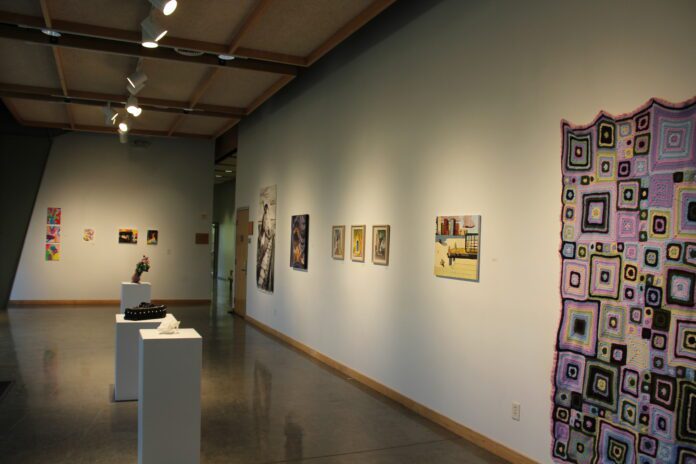The Drama Department’s Fall Mainstage, “The Seagull” by Anton Chekhov, illustrates the hardships of being an artist and being a human. In light of this, the desire to define art surfaces. Several artists here at the University of Dallas give their own insights as they, too, explore the question of what art is.
Tien Bui, a senior art major with a focus in painting, relates art to the divine. Bui said, “Art is a form of visual communication that should draw viewers to goodness, beauty and truth. Art is the action of the artist imitating God.” The artist creates, taking the intelligible yet complicated world and striving to understand it.
Stefan Novinski, an associate professor of drama and theater director, said, “According to St. Thomas, by way of Flannery O’Connor’s article, ‘The Nature and Aim of Fiction,’ the artist’s concern is ‘the good of that which is made.’ What they mean is that the artist’s concern when they are making a work of art is the perfection of the thing which is being made[…] It is important that the concern of the artist is the work itself, not the usefulness of the work.”
Dr. Estelle Voisin-Fonteneau, affiliate associate professor of art history, said, “What’s really interesting is [that] the works that we find most classical today were revolutionary—and I’m using that word specifically—several years ago… I think that something that now has become classical was radical at some point.”
Voisin provided an example: “I love to draw nudes. For me, it is a metaphysical thing in that I see the beauty of God’s creation. But other people find that offensive and see it as something only sexual, something low, something that can be very disturbing, whereas I see it as beauty.”
In “The Seagull,” the protagonist, Constantine, writes abstract and symbolic plays that the audience does not receive well.
Constantine’s style of writing attempts to break off from the popular melodrama and neoclassicism that his society prefers. Whether his exploration of a new form of art is a good or bad thing invites much pondering.
Novinski said, “The beauty in true art is often frightening and full of questions. It is a beauty which, according to Pope Benedict, has an essential function, which is to give ‘man a healthy shock.’ It draws him out of himself, wrenches him away from resignation…and in so doing, ‘reawakens him.”’ Great works of art come with great questions and very few answers.”
Though Bui found nothing wrong with experimenting with new art forms, she was concerned about finding abstract ideas via sacrificing the purpose of glorifying God. “They aren’t saying anything with their artwork, and since art is a form of visual communication, and a very important one with moral implications at that, they should have thought about what they actually wanted to say before saying anything at all.”
Benjamin Thomas, the junior drama major who played Constantine, gave his own thoughts on the character. “Constantine has a lot of big ideas of what writing should be, what art should be, what theater should be. With Constantine, it’s all about what it should be, and it turns out what he thinks it should be is super abstract.”
Thomas further explained, “To sum up, what I’ve learned from playing Constantine and what has helped me get into Constantine is this idea of someone who just can’t really connect with the world around him. Constantine is an idealist, he really is, and he’s not very practical. That doesn’t really work for him.”
Voisin commented on Constantine’s abstract style: “…It sounds like what he tries to make [through his play] is to make us reflect upon all that is. I’m also very interested in […] seeing the sacred, the transcendent in everything, even the smallest of things. That seems to me what he was trying to do, and his frustration came from others not seeing it, so therefore, he’s not penetrating enough with his work.”
Thomas also discussed the unique ability of theater to touch the audience: “The thing about theater, which is so unique among art forms, is once it’s done, it’s gone. Once the run of a show is done […], and even if you watch a recording or a film of it, it doesn’t capture the same thing. So much of theater art is the energy in the room that you just can’t capture.”
Though art seems to be a subjective matter, the artists of UD utilize their knowledge of philosophy, theology and history to present art with a purpose: to glorify God, to connect with each other and to explore the truths of existence.
